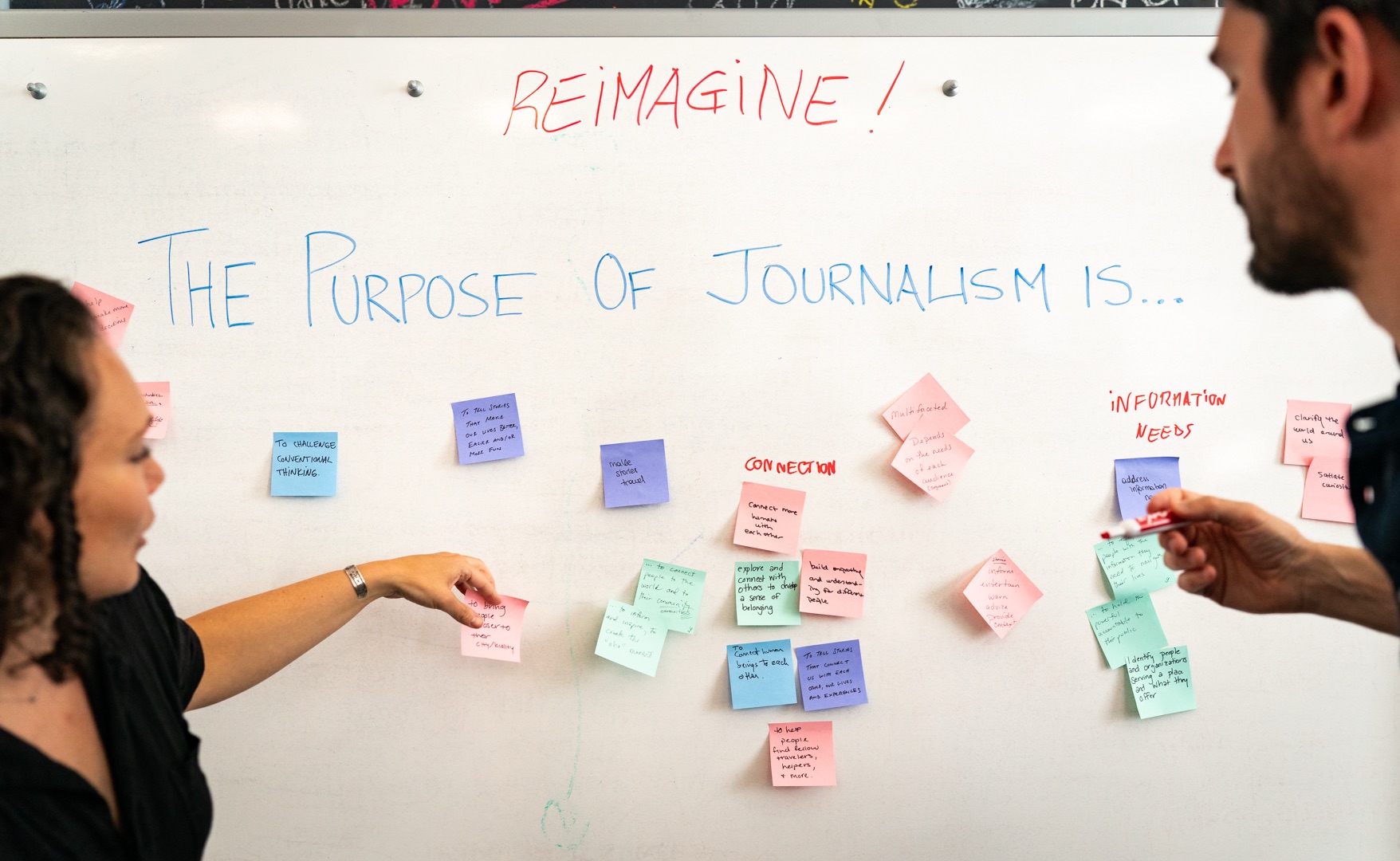In the last few months, I cheered from the sidelines of the Macy’s Day Parade, I built a kite to fly in India, I strutted the streets of New York Fashion Week and I tailgated a football game in the dead of January.
All from the comfort of my bed.
How did I do it? Well, I watched these events unfold via Snapchat, an app I normally reserve for sending selfies to friends. I didn’t see these events on the news, I didn’t search for them on Google. But they found their way to me nonetheless, and I couldn’t tear myself away.
In 2013, Snapchat introduced a feature called My Story, which allows users to send certain snaps to a quasi profile page. These snaps can be viewed innumerable times within a 24-hour period, but vanish thereafter. By June 2014, The Verge reported that Snapchat Stories were viewed more than individual snaps.
The following summer, Snapchat rolled out a new version of My Story – one that allows users to share their real-time activity to a public My Story, called Our Story. The content shared to Our Story is curated by Snapchat, and the snaps that make the cut can be viewed by a worldwide audience within a 24-hour period. A user simply opens Snapchat, taps into the Stories screen and holds down a finger. In three simple steps, they’re transported into the experience of an event.
Of course, one could learn about these events from reading a news article. Or watching a TV clip. But Our Story has three key advantages over traditional media: It’s easy, it’s personal and it’s ephemeral. The user doesn’t have to exert effort to learn about a topic. The information is delivered straight to them, and the disappearing nature of Snapchat means that users have an incentive to view content immediately, rather than putting it off for a later date and forgetting.
Moreover, Our Story works because it doesn’t limit an event to one perspective. The curated content comes from dozens of Snapchat users — none of whom experience an event in the same way. On TV and in print, audiences are often exposed to one version: the reporter’s. In many cases, such as with awards shows, parades and football games, the event is boiled down to the version most likely to please the audience and maintain views. Sure, Snapchat employees decide which snaps make the final cut for worldwide Our Story viewing (much like an editorial process), but the user-generated quality of the feature means Snapchat can be everywhere at once, and tell the same story in a personal manner.
Currently, events for Our Story are chosen by Snapchat, and only users in a defined geographical area can send snaps to the Our Story platform. Mary Ritti, Snapchat’s vice president of communications, said in an email, “we really just pick the things we think are interesting and fun to share with the Snapchatter community.”
If Snapchat expands Our Stories to cover a breaking news event — by giving users in a certain geographical area the opportunity to submit their snaps to a curated Our Story — millions of users will be able to see first-hand accounts of ongoing news, not just pre-planned cultural events. Our Stories can transport a user into the atmosphere of an event from all perspectives, much like Twitter already does.
But if Our Stories are to fulfill their potential for crowdsourced journalism (which, admittedly isn't Snapchat's game), the matter of their curation must be more transparent. When an unknown figure or team employed by Snapchat decides what will or will not be seen by the public, information has the potential to be skewed. This, of course, is an ability and challenge news outlets already face.
In the past, calls have been made for Snapchat to add Our Stories to notable, political and newsworthy events, like the protests in Ferguson, Missouri. So far, Snapchat hasn’t delivered. Ritti said in an email that any intent to expand Our Stories for breaking news coverage is “not something we can comment on at this time.”
Regardless of Snapchat’s future plans, the invention of Our Story – still less than a year old – indicates that crowd-sourced journalism has a place in the future of news. When content is engaging, easy to use and has a personal touch to it, users are incentivized to learn more about a topic they might otherwise never have cared for.
Using Snapchat's Our Story, millions of users worldwide might be empowered with first-hand accounts of ongoing news stories.
About the author
Tagged





